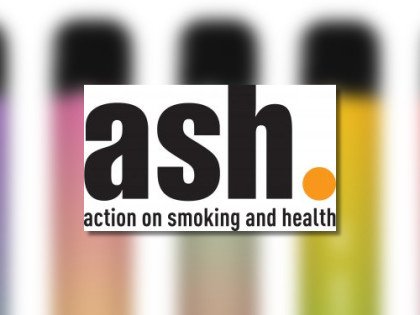For the 1.1 billion people across the world who smoke combustible cigarettes, tobacco harm reduction is a potentially life-saving approach. Like other forms of harm reduction, it recognises that simply quitting isn’t possible for all smokers. People smoke for the nicotine, but nicotine itself does not cause smoking-related death and disease - it’s the chemicals inhaled in tobacco smoke. Removing combustion reduces the risk. For those people who can’t or don’t want to quit nicotine, tobacco harm reduction offers a chance to switch to safer nicotine products including nicotine vapes (e-cigarettes), tobacco-free nicotine pouches, Swedish-style snus (an oral tobacco), many US smokeless (chewing) tobaccos and heated tobacco products.
Many of these products have only been developed in the last 10-15 years, but they are proving increasingly popular. Research published in March by the GSTHR estimates there were 82 million vapers worldwide in 2021. This represents a 20% increase on the figure for 2020 (68 million), meaning safer nicotine products are now being used by 112 million people worldwide. A striking example of tobacco harm reduction’s potential can be found in Scandinavia. Sweden now has the lowest rate of tobacco-related disease in Europe, thanks to Swedish men switching from smoking to snus, and in Norway, 12% of women aged 16-24 use snus daily while only 1% smoke.
In England, tobacco harm reduction can play a key role in the government’s bold ambition to make the country smoke-free (defined as a prevalence rate of under 5 per cent of the population) by 2030. The uptake of vaping has been accompanied by a rapid decline in smoking. Vapes are the most popular way to stop smoking, with 3.6 million people vaping in Great Britain, of whom 2.4 million have completely quit combustible cigarettes. But tobacco is still the single largest cause of preventable mortality in England with nearly 75,000 smokers dying from smoking in 2019 and figures show nearly one in 10 pregnant women are smoking at the time of delivery.
Continuing to drive down smoking rates is crucial if the UK Government is to tackle the health disparities caused by smoking that currently see a disproportionate burden falling on the most disadvantaged families and communities. Smoking rates vary significantly across the country – for example in Blackpool about one in five people smoke (19.8%), compared to about one in twenty in Richmond upon Thames (6%). Rates are also very high among people who experience drug and alcohol problems (56% of those entering treatment smoke), people who are homeless (of whom 77% in England smoke) and people who live with mental health problems (of whom 26.8% in England smoke).
But adopting tobacco harm reduction will not just help the UK counter the impacts of smoking. It has huge potential as a global public health solution. Smoking is responsible for 7.7 million deaths a year and current tobacco control measures are failing to reduce the death and disease caused by smoking fast enough. Translated into Spanish, Russian, Mandarin, French, Portuguese, Indonesian, Swahili, Japanese, German, Polish, Hindi and Arabic, this GSTHR Briefing Paper is intended to start conversations in countries across the world where harm reduction has yet to be recognised.
Professor Gerry Stimson, Director of K•A•C and Emeritus Professor at Imperial College London, said: "An end to smoking is possible - but the widest range of harm reduction products, from nicotine vapes and heated tobacco products to non-tobacco nicotine pouches and Swedish-style snus, should be available, accessible, appropriate and affordable to all. Strong government support is also needed to ensure access for marginal and vulnerable groups. The gains will be evident in the lives saved and the communities protected. Crucially, tobacco harm reduction is an extremely low cost yet effective strategy - a rare example of a health intervention that doesn't require significant government expenditure, as consumers bear the cost. An end to smoking is possible - and tobacco harm reduction is the key.”
References:
- What is Tobacco Harm Reduction? - https://gsthr.org/briefing-papers/what-is-tobacco-harm-reduction/
Dave Cross
Journalist at POTVDave is a freelance writer; with articles on music, motorbikes, football, pop-science, vaping and tobacco harm reduction in Sounds, Melody Maker, UBG, AWoL, Bike, When Saturday Comes, Vape News Magazine, and syndicated across the Johnston Press group. He was published in an anthology of “Greatest Football Writing”, but still believes this was a mistake. Dave contributes sketches to comedy shows and used to co-host a radio sketch show. He’s worked with numerous start-ups to develop content for their websites.
Join the discussion
The UK King's Speech
King Charles has delivered the UK King's speech on smoking and vaping detailing the Government’s intention to reduce disease and death caused by tobacco
KAC Scholarship Seeks Tomorrow’s Leaders
The KAC global scholarship programme seeks out the tobacco harm reduction leaders of tomorrow and you have until 30 November to apply for the seventh cohort
ASH welcome Rishi Sunak’s announcement on smoking
The All Party Parliamentary Group and ASH “are delighted by the Prime Minister’s clear signal in his speech today he wants to put delivering a smokefree 2030 at the heart of his public health legacy”
Israel Plan Threatens Public Health
Israel's smoking action plan raises concerns over public health impact, according to The World Vapers' Alliance






-listing400.jpg)




